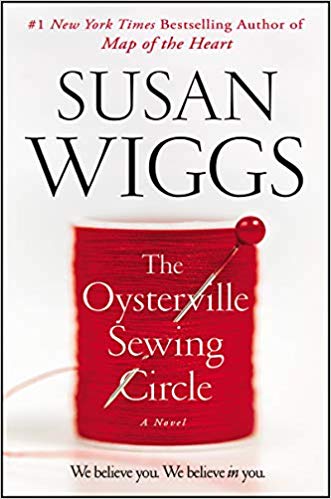 The Oysterville Sewing Circle by Susan Wiggs
The Oysterville Sewing Circle by Susan Wiggs Format: eARC
Source: supplied by publisher via Edelweiss
Formats available: hardcover, paperback, large print, ebook, audiobook
Genres: women's fiction
Pages: 384
Published by William Morrow on August 13, 2019
Purchasing Info: Author's Website, Publisher's Website, Amazon, Barnes & Noble, Kobo, Bookshop.org
Goodreads
The #1 New York Times bestselling author brings us her most ambitious and provocative work yet—a searing and timely novel that explores the most volatile issue of our time—domestic violence.
At the break of dawn, Caroline Shelby rolls into Oysterville, Washington, a tiny hamlet at the edge of the raging Pacific.
She’s come home.
Home to a place she thought she’d left forever, home of her heart and memories, but not her future. Ten years ago, Caroline launched a career in the glamorous fashion world of Manhattan. But her success in New York imploded on a wave of scandal and tragedy, forcing her to flee to the only safe place she knows.
And in the backseat of Caroline’s car are two children who were orphaned in a single chilling moment—five-year-old Addie and six-year-old Flick. She’s now their legal guardian—a role she’s not sure she’s ready for.
But the Oysterville she left behind has changed. Her siblings have their own complicated lives and her aging parents are hoping to pass on their thriving seafood restaurant to the next generation. And there’s Will Jensen, a decorated Navy SEAL who’s also returned home after being wounded overseas. Will and Caroline were forever friends as children, with the promise of something more . . . until he fell in love with Sierra, Caroline’s best friend and the most beautiful girl in town. With her modeling jobs drying up, Sierra, too, is on the cusp of reinventing herself.
Caroline returns to her favorite place: the sewing shop owned by Mrs. Lindy Bloom, the woman who inspired her and taught her to sew. There she discovers that even in an idyllic beach town, there are women living with the deepest of secrets. Thus begins the Oysterville Sewing Circle—where women can join forces to support each other through the troubles they keep hidden.
Yet just as Caroline regains her creativity and fighting spirit, and the children begin to heal from their loss, an unexpected challenge tests her courage and her heart. This time, though, Caroline is not going to run away. She’s going to stand and fight for everything—and everyone—she loves.
My Review:
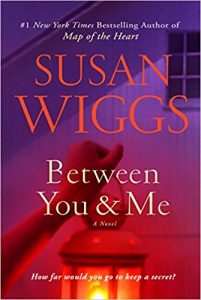 The Oysterville Sewing Circle turned out to be a lovely story with multiple themes – and everything I expected from this author. Particularly after last year’s marvelous Between You and Me.
The Oysterville Sewing Circle turned out to be a lovely story with multiple themes – and everything I expected from this author. Particularly after last year’s marvelous Between You and Me.
First of all, this is a story about home – the Robert Frost version of home being the place that when you have to go there, they have to take you in. Because as the story begins, Caroline Shelby is returning to tiny Oysterville because she needs to take refuge. Her life has both fallen apart and moved in a direction that she never expected, and she needs help and a place to heal.
Secondly, this is most definitely a love story – in multiple senses of that phrase. Partly, it’s a lovely second-chance-at-love story. The love of Caroline’s life is also back in Oysterville. They missed their chance back in high school, but chance has come around again – and this time they are both mature enough to grab it and hang on tight.
There’s another kind of love in this story. Caroline has returned to Oysterville with two children in tow, children that she never expected or planned to have. But that she agreed to care for out of love for her best friend, suddenly dead of a drug overdose. Over the course of the story, she comes to love Addie and Flick not just for their mother’s sake, but for their own. And it’s Caroline’s metamorphosis from slightly reluctant and completely overwhelmed guardian to adopted “mom” that gives the story much of its heart.
The soul of this one comes from the darker circumstances that gave birth to both Caroline’s need to flee New York and her guardianship of Addie and Flick after their mother’s sudden death.
Because their mother Angelique was a top-tier fashion model who had been chewed up and spit out by the cutthroat fashion industry. As had her designer friend Caroline, who had seen her award-winning designs stolen by the man she believed was her mentor.
Once the truth finally comes out, Caroline discovers that she got off relatively easy, but that the damage that same man had done to Angelique was more than she could survive. Which leads to the three darker themes of the story.
Angelique was a high-functioning drug addict who hid her addiction well, until it killed her. Whether the man who regularly abused her got her hooked or simply drove her back to drugs when she couldn’t bear the beatings any longer is not known. But his physical abuse of Angelique as well as his deliberate destruction of Caroline’s career shines a bright light into the crawling darkness of the #MeToo movement.
And Caroline’s need to do something, anything, to give women like Angelique a safe place to talk, to be listened to, and to be heard, exposes the hidden-yet-not-hidden secret cesspool of domestic abuse, that it happens everywhere, even in small, seemingly perfect places like Oysterville.
And that both domestic abuse and addiction affect every person around the abuse and the addiction in ways that ripple out like a stone thrown into a pond.
Every town needs an Oysterville Sewing Club – and women like Caroline who stand up to become beacons of hope – and who receive hope themselves.
Escape Rating A: This was one of my airplane books on the way back from Ireland. I had 8 hours to kill, which meant plenty of time to read. The part of the trip I spent in Oysterville with Caroline absolutely flew by – pun definitely intended.
This is a story with a lot going on, taking a surprising dive into areas that don’t seem like the province of women’s fiction – particularly not so many all in the same WOW of a book.
There were a lot of things that I loved about this story. I think that the biggest was that Caroline never has all the answers. She just has questions – and the more she questions the more comes to light.
Caroline’s part of the story both echoes and illuminates the #MeToo movement. In her case, it was never about sex – only about exploitation. She had the ideas, but her supposed mentor had all the power. Her attempt to fight back against his blatant theft destroyed her career and left him even better off than before. And it’s both utterly disgusting and absolutely believable.
What made the story for me was Caroline’s attempt to understand what happened to her friend. Both because she feels guilty that she didn’t see the signs of the addiction, and because she didn’t speak up about the abuse that she suspected was going on. Out of her desire to understand, and admittedly to expiate some of her guilt, she starts the organization that becomes the Oysterville Sewing Society in order to give women in her old/new community a safe place. A place that she also needs.
And out of that comes her own healing, both emotionally and for the career that she thought was dead in the water. That she gets justice for her friend, and a happy ever after for herself and her children, is icing on a very lovely cake.
Bittersweet chocolate is my favorite, after all.


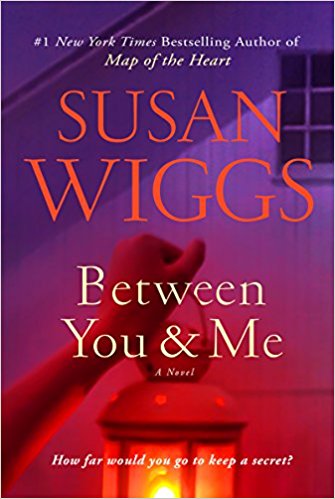 Between You and Me by
Between You and Me by 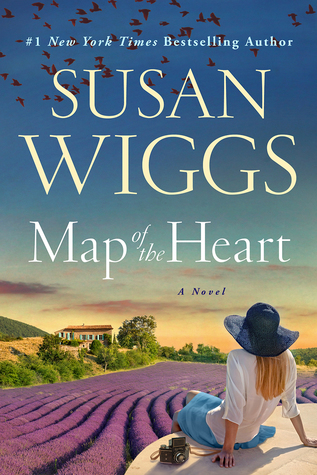 Map of the Heart by
Map of the Heart by 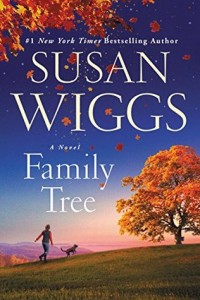 I picked up Map of the Heart because I absolutely adored last year’s
I picked up Map of the Heart because I absolutely adored last year’s 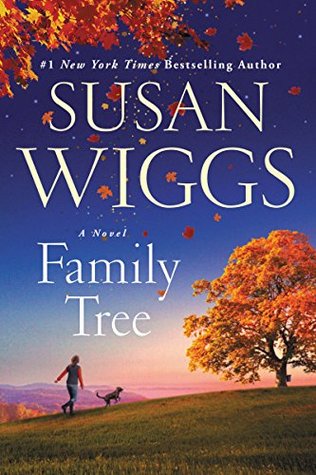 Family Tree by
Family Tree by 